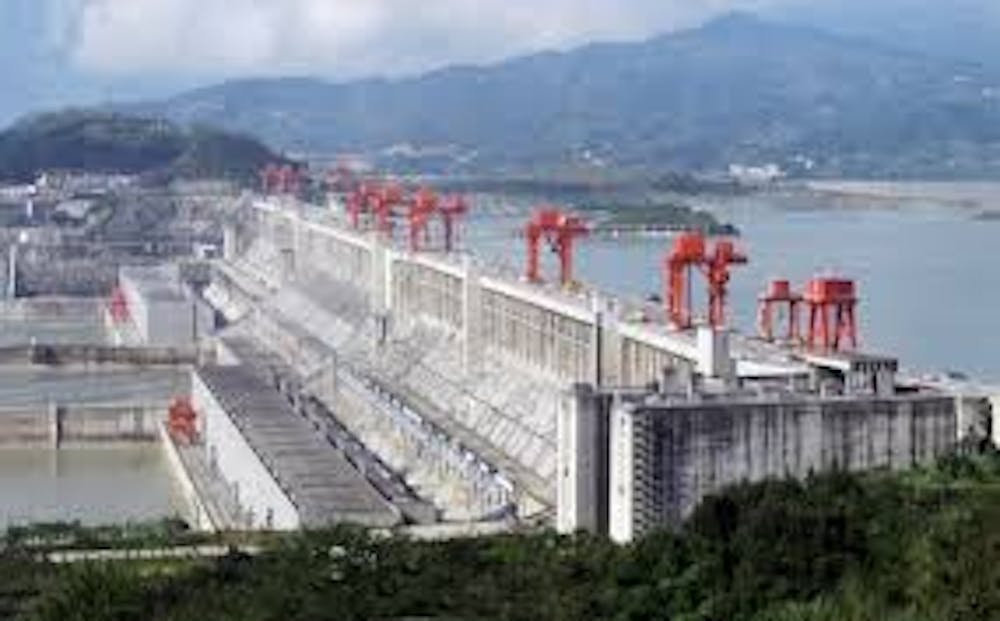As developers in China rush to build dams along the Mekong River in southeast Asia, villagers are seeing their fish disappear, their rice fields die and their homes flooded. Although China can feel far from home, the impact of unnecessary dam construction for the sole purpose of hydroelectric power generation is ubiquitous. These large dams work to generate hydroelectric power by harnessing the movement of flowing water to rotate large turbines. However, hydroelectric dams not only cause flooding in the surrounding land environment but they also prevent the free movement of aquatic life and nutrients along the river leading to issues with food, jobs and homes. Therefore, building these dams poses far greater consequences for the river’s ecosystem — and its inhabitants — than is gained by the renewable nature of hydroelectric power.
Hydroelectric power is not innately bad — small turbines installed in running creeks or streams can be very effective in powering individual homes or even communities with renewable energy. However, it becomes problematic when dams are built for the sole purpose of hydroelectric power generation. In the U.S., hydroelectric dams are incredibly prevalent — the nation is home to approximately 2,300 dams with 45 of these located in Virginia. However, the major issues associated with the dams on the Mekong River have also impacted communities and ecosystems across the U.S.
One of the largest environmental problems surrounding dams is the endangerment and eventual extinction of migratory fish vital in feeding communities and maintaining the aquatic food chain. Not only do these dams block their reproductive movements, but they also cause shifts in the nutrient composition and temperature of the water further impacting fish health. One common solution to allow for upstream movement is the fish ladder — by relying on the fish’s natural ability to jump over rocks, the ladder allows for the fish to scale what is essentially a ramp around the dam.
Despite the centuries of engineering invested in these ladders, a majority of fish will never reach their spawning grounds, and for the more lethargic fish native to Asia or South America where large-scale dams are being proposed, these ladders will almost surely fail. There are also major issues with juvenile fish migration as the fish are often swept in turbines while swimming downstream. While there are currently no widespread solutions for the movement of juvenile fish, the most common involves collecting the fish at the dams and literally driving them — either in a gas-guzzling truck or barge — to the ocean. Of course, the massive issues with these migratory methods are only relevant if that dam invests in building these structures at all — the Grand Coulee Dam in the state of Washington does not have fish ladders or juvenile bypasses.
Beyond eradicating food sources, dams have also destroyed the livelihoods of poor farmers in nations where a majority of farming is done on the banks of rivers. Since dams prevent the natural movement of nutrients, areas downstream of the dam are now struggling with nutrient-poor soil. This is a particularly troubling issue for rice farmers who grow their crops directly in the water and rely on a specific nutrient composition in their soil. These shifts in nutrient composition and temperature have also led to the growth of invasive species that directly compete with crops while altering the ecosystem of the region.
Dams have additionally worked to decimate the lives and homes of these farmers through devastating flooding. When larger rivers are blocked, entire villages and ecosystems can be completely submerged in water, displacing millions of people. The Global Freshwater Program estimates that 40 to 80 million people have been displaced in the past decade due to dam construction. The cost for villagers who have been living peacefully for generations is massive, yet they rarely reap direct benefits from hydroelectric power since it is generated for factory usage rather than household usage. Dams have and will continue to dismantle the lifestyle of people around the world should they be used as battery packs for the planet. These villagers will not only lose their homes, but massive shifts in the climate, soil quality and ecosystem will have a lasting impact for generations to come.
Large-scale hydroelectric power may not have met hopes or expectations, but there are better ways to generate renewable energy. David Roberts, a strategic advisor for USAID-Asia, suggests a thoughtful integration of a variety of renewable energy sources that cross communities, states and even countries. He advocates that nations, like those on the Mekong River, utilize their individual climates to generate renewable electricity, which can then be shared or traded. Additionally, there are a variety of alternative renewable energy sources at our disposal — like solar and wind power — which are also cheaper sources of energy generation than fossil fuels. It is simply our responsibility to reflect deeply about how we utilize renewable energy on our planet and, ideally, implement it in a manner that is cohesive and long-lasting in Virginia, the U.S. and around the world.
Vani Agarwal is a Viewpoint Writer for The Cavalier Daily. She can be reached at opinion@cavalierdaily.com.







